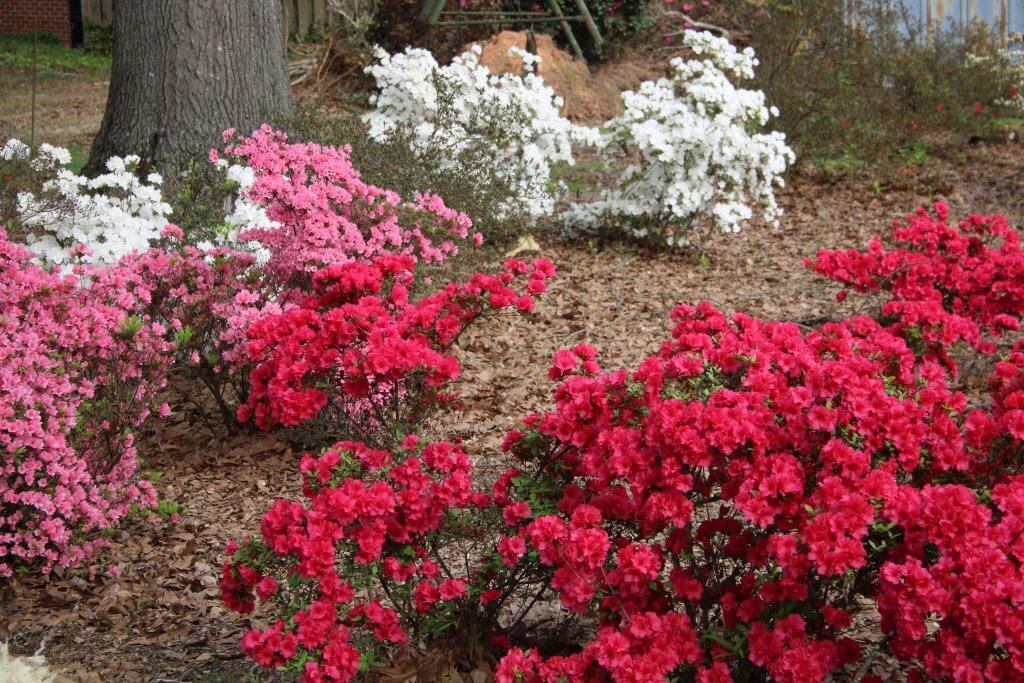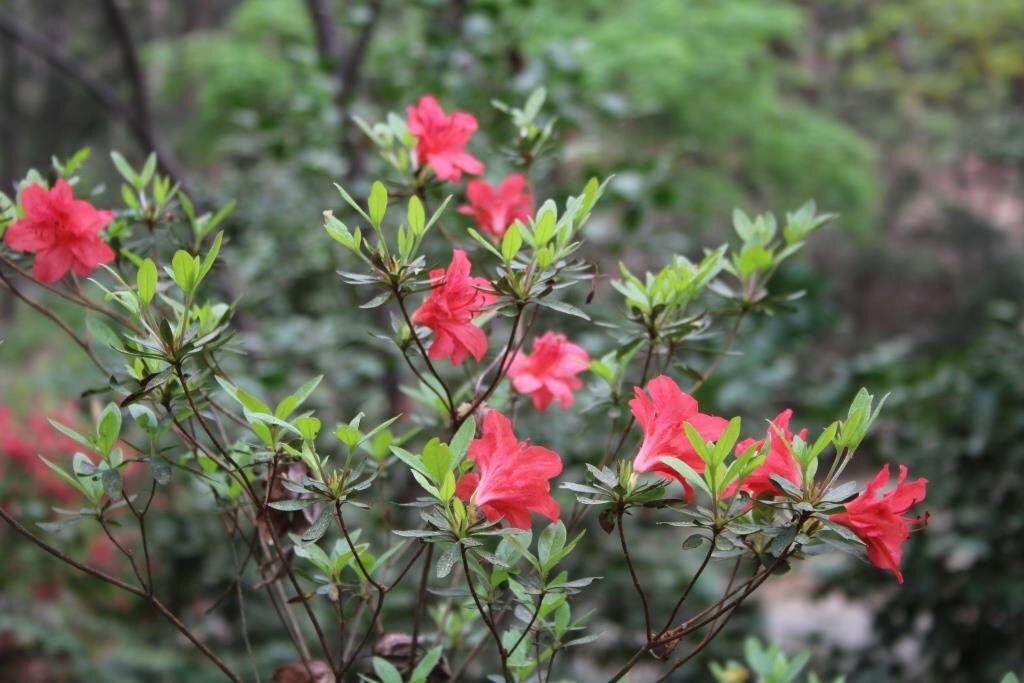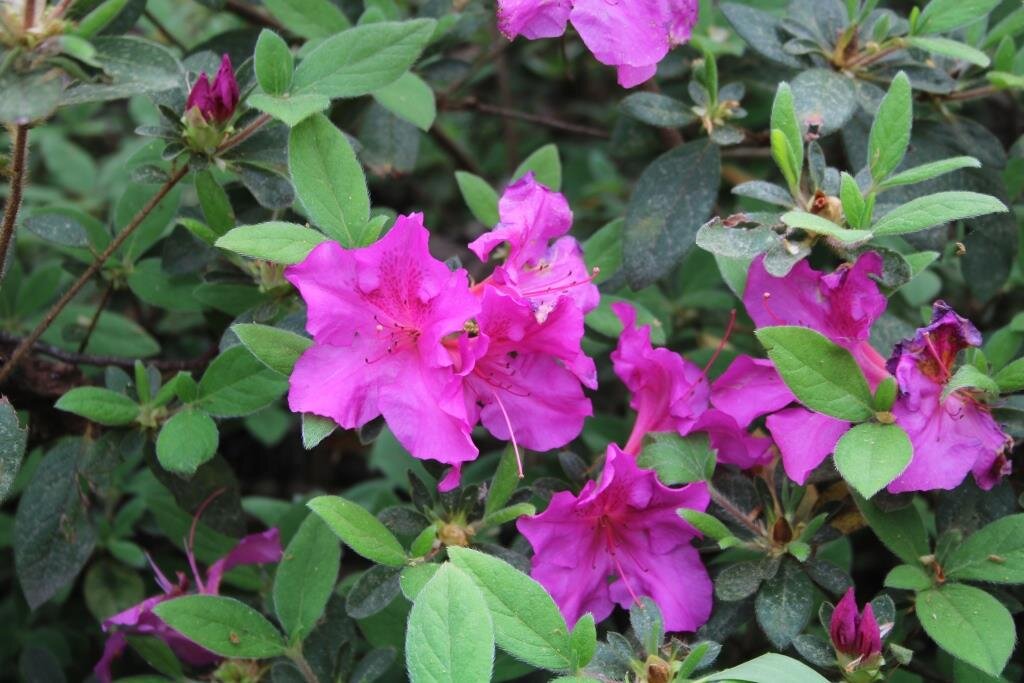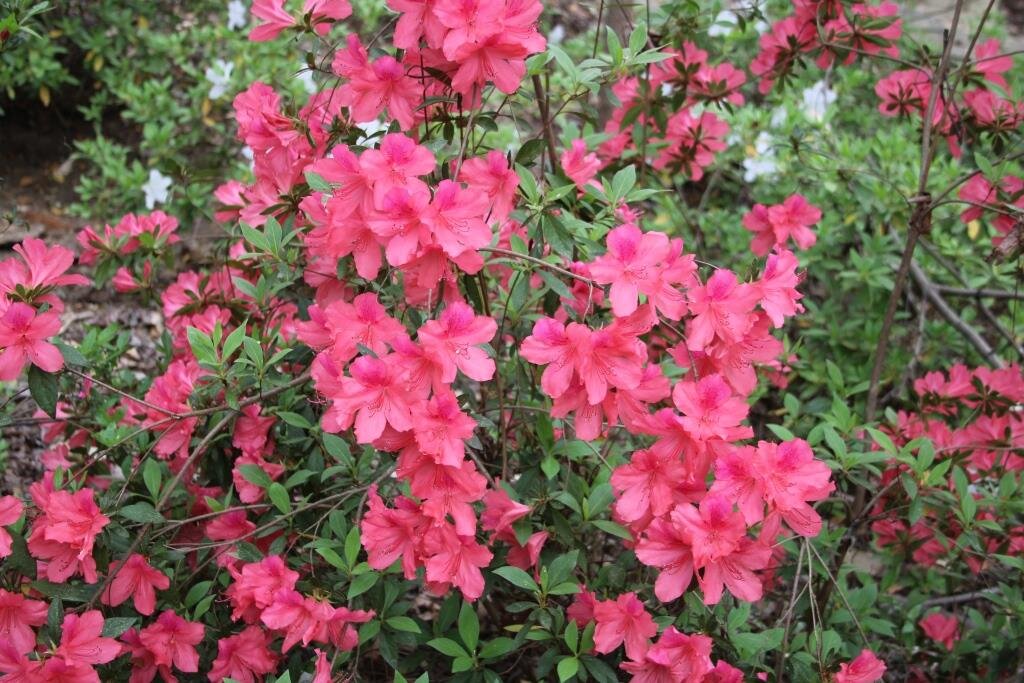If the south had a signature shrub, it would likely be Azalea. Anyone who has watched the PGA Masters golf tournament at Augusta National or traveled through Charleston, SC in springtime can identify the gorgeous members of the Rhododendron genus known as Azaleas.
Give Azaleas acidic soil with plentiful organic matter and partial shade. They especially like the filtered shade of tall pines, it seems. Too much shade and they won’t bloom; too much sun and the leaves get crispy. Stressed plants are susceptible to damage from lacewing insects. Azaleas have shallow roots, so should be irrigated in hot, dry weather. They will not tolerate drought or constantly wet, boggy soils. They are not heavy feeders, so little fertilizer is needed. The University of Georgia Extension has an excellent bulletin on selecting and growing Azaleas. Read it by clicking here.
A lanky plant can be made more attractive by removing awkward long shoots. To provide better air circulation, plants can be thinned by removing some of the inner limbs. Use hand pruners or loppers for either job. Electric hedge trimmers produce unattractive round blobs. It is best to do any pruning immediately after petals shed, to ensure that you are not removing buds that will become flowers next year. While I see many examples of Azaleas that have been pruned into a tight hedge, this is not the best use of the plant. Allow them to retain their native irregular shapes and they will look more graceful.
Azaleas come in all shades of pink, rose, red , lavender, purple and white. Many have attractive contrasting freckles. When I worked in a plant nursery, my customers’ favorites were pink ‘George Lindley Tabor’ and white ‘Mrs. G. G. Gerbing.’ (The latter is much more attractive than ‘Delaware Valley White,’ which seems to hold onto its spent blooms forever.) In recent years, a personal favorite are the Satsuki hybrid Gumpo (please, NOT Gumbo) Azaleas. Gumpos are dwarf, reaching only two feet. They have dense, evergreen foliage and bloom a little later than the more “traditional” types. They tend to be uniform in size, making an attractive foundation plant.
Azaleas put on an amazing show in April and May, then fade into obscurity the rest of the year — except rebloomers. The best known of these, Encore® Azaleas, have led nursery sales since their introduction. Encores are aptly named, since they rebloom in the fall, although the autumn show is never quite as spectacular as the spring performance. They tolerate more sun than most other cultivars.
Like other members of the Rhododendron family, all parts of Azaleas are toxic to both humans and pets. Deer prefer to munch on new, young, tender shrubs; they exert less damage on older, tougher specimens.






